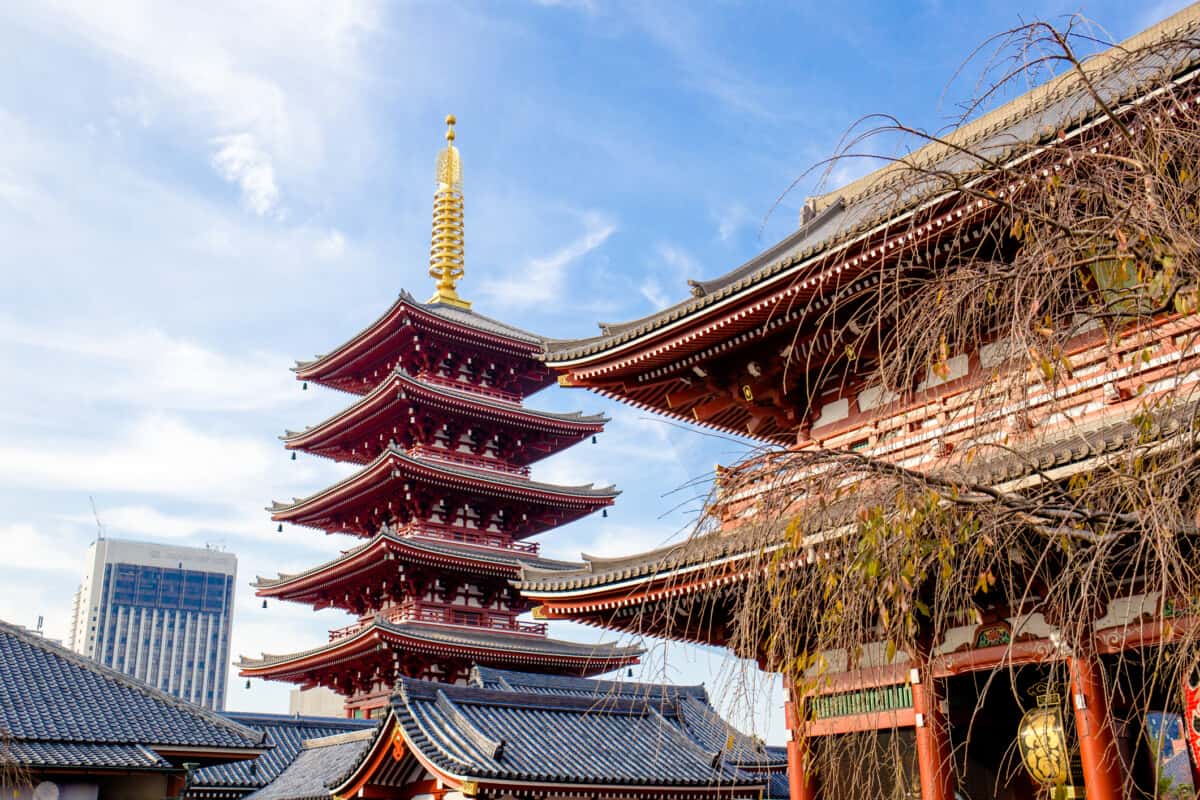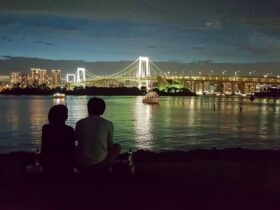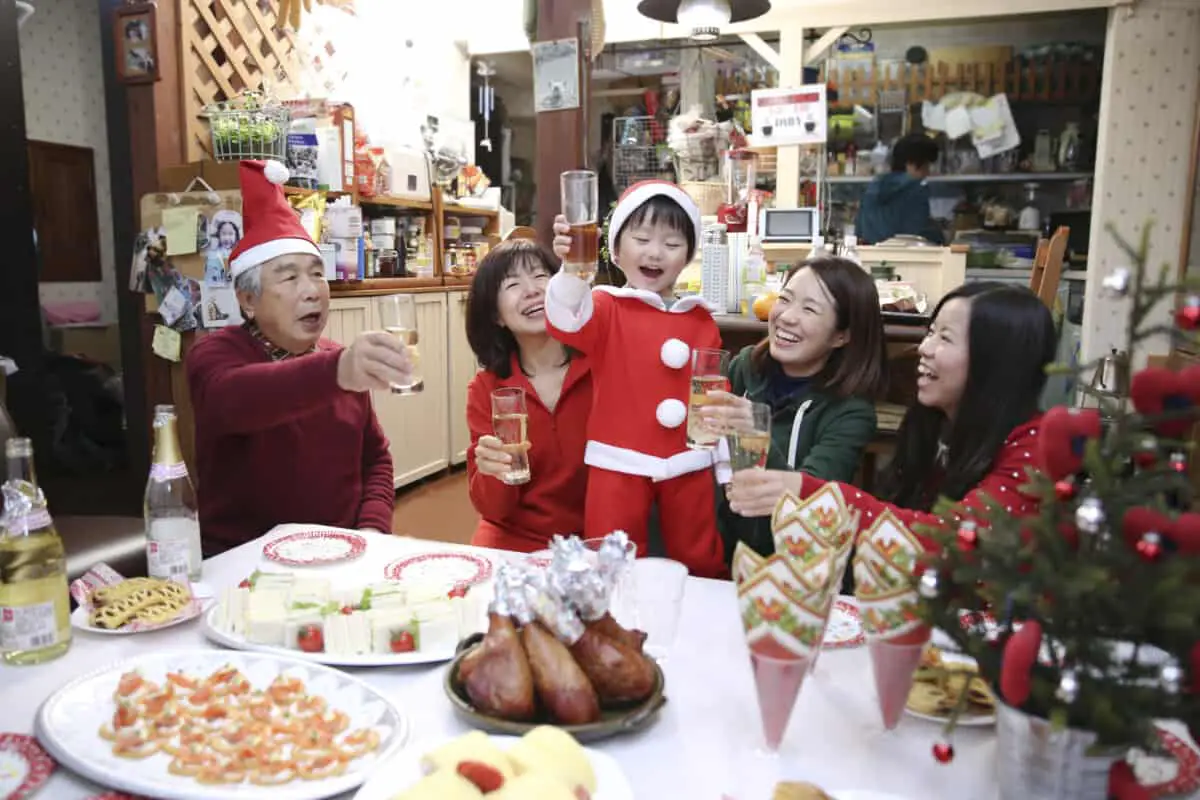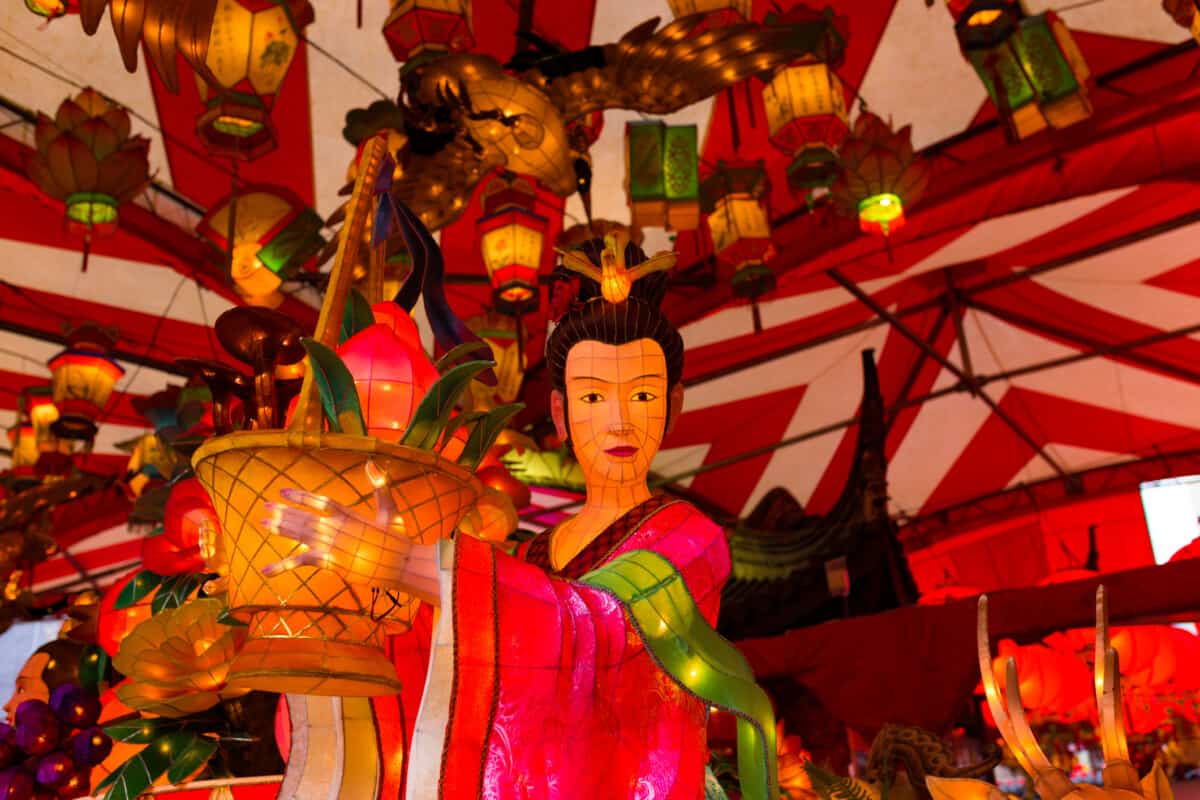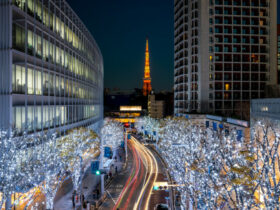Regardless of your faith, visiting the many temples and shrines throughout Japan is a must. You can learn an extensive amount about Japanese history through these temples, admire some amazing architecture and visit the surrounding serene gardens.
One such place that is worth a visit is the Sensoji Temple and its 173-foot pagoda, located in Asakusa in Tokyo, Japan. The pagoda is unlike any you’ll see around other temples and shrines in Japan.
Sensoji Temple
The Sensoji Temple is an important element of Buddhism’s history, given that it’s one of the oldest temples that still exist in modern-day Japan.
It has been a hotspot for tourism and is one of the most visited temples in the world, as many who are spiritual in any sense are drawn to the temple.
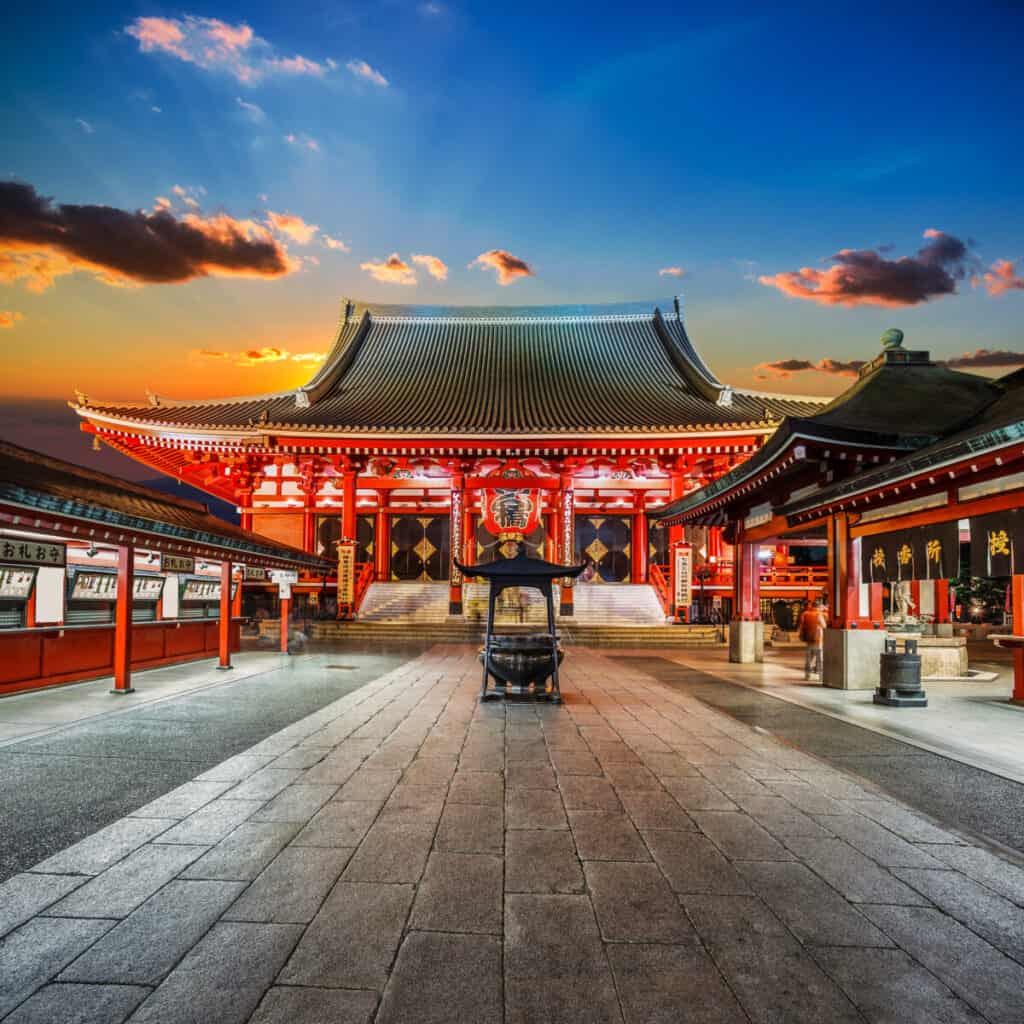
The History Of Sensoji Temple
There is a legend in Tokyo that there was a statue of Kannon found by two brothers in the Sumida River. They saved this statue from the running water and brought it to their community.
The leaders realized how important this statue was to preserve, and so it was renovated and placed into a local leader’s home that was converted into a little temple to allow others to come to see the statue and pray around it. This legend was based in the 600s. Since then, the temple evolved into Sensoji Temple.
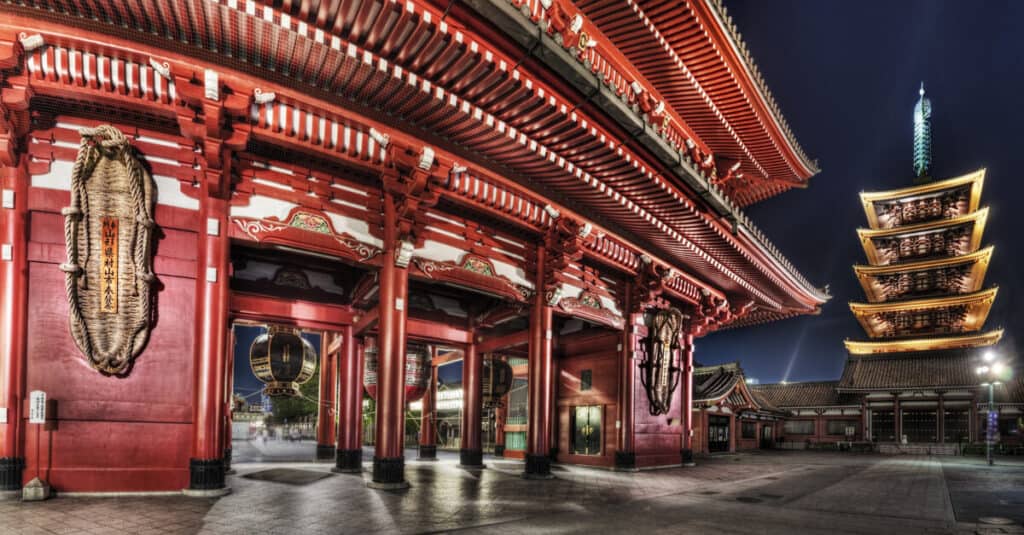
The Pagoda’s Origins
The pagoda at the Sensoji temple was built to honor Kannon Bosatu, the goddess of mercy in the Buddhist faith.
The pagoda was originally built in the 900s but has been destroyed by fire on a few separate occasions. The current structure has been in place since 1973.
The first pagoda was built by Taira No Kinmasa. Its reconstruction in 1648 was completed by Tokugawa Iemitsu.
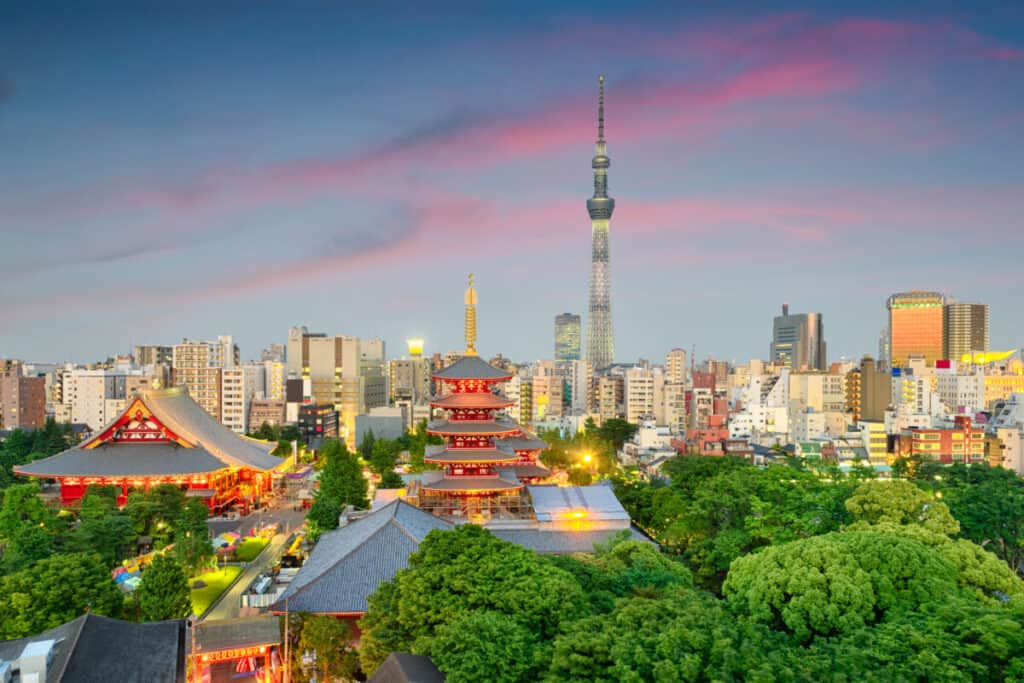
The Five Storied Pagoda Of Sensoji Temple
It’s difficult to miss the expansive five-story pagoda of Sensoji Temple. This structure is not only large, but its bold red color stands out from the surroundings.
This pagoda is so special because it protects some of Buddha’s ashes gifted to Japan by Sri Lanka. The structure was built to protect this sacred artifact and is the second-largest pagoda in Japan in terms of height.
The five stories are not just a design choice; it holds some spiritual significance. It is said that each of the five stories represents one of five important elements; earth, water, fire, wind, or sky.
What Is A Pagoda?
A pagoda is a structure often found at temples in Japan. They can house specific artifacts or important items to the Shinto or Buddhist faiths.
Additionally, some of the items protected in pagodas are specific to the deity or god that the temple exists to honor.
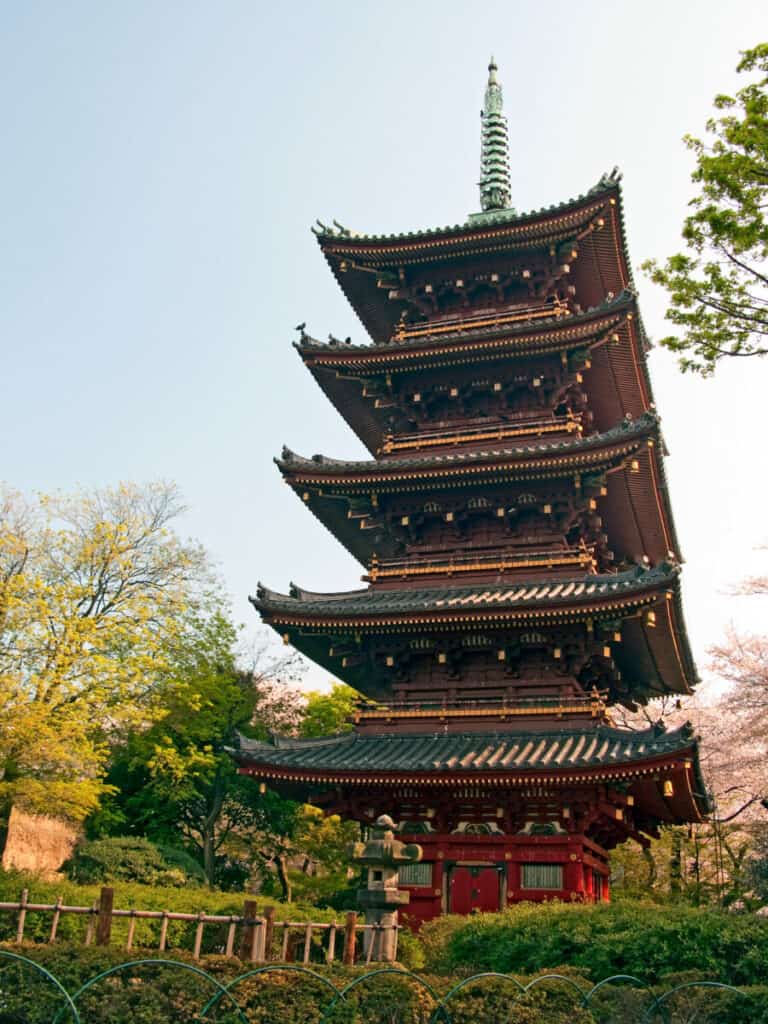
The Pagoda At Night
If you’re wandering through the streets of Asakusa at night, you’ll notice some bright lights illuminating around the pagoda tower. You’ll be able to see just how beautiful and intricate the pagoda’s design is when it is illuminated.
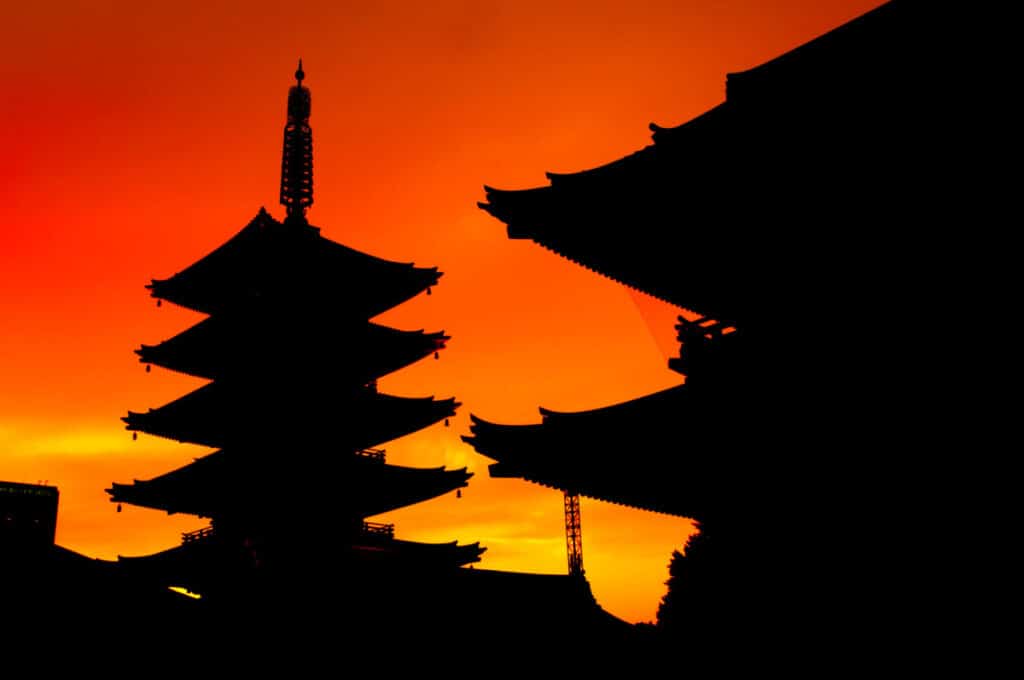
Sanja Matsuri
The Sanja Matsuri is also known as the Three Shrine Festival. This thrilling festival celebrates the founding of the Sensoji Temple. If you are in Japan in May, it’s worth making your way to Asakusa to partake in the celebration. It’s typically held on the third weekend in May.
There are parades, music, and so much more. You can also watch the mikoshi make their way down the street.
These wooden structures are replicas of the Asakusa Shrine and are large, elaborate, and expensive. They are paraded down the street during the Sanja Matsuri, and it’s truly a wonderful experience that you’ll never forget.
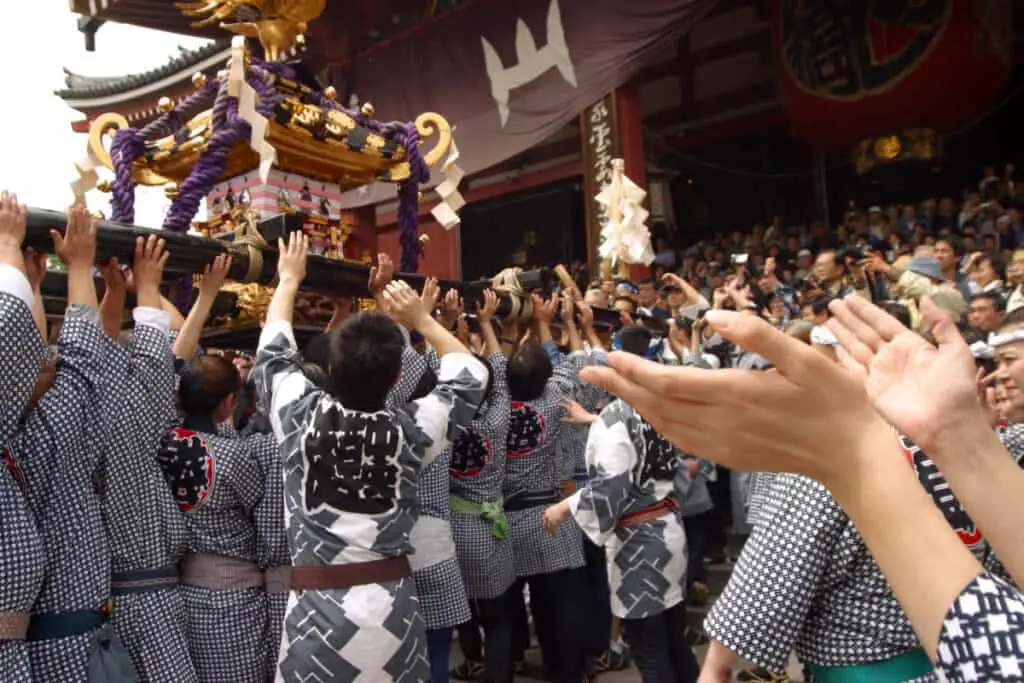
Nakamise Street
It’s worth taking your time strolling down Nakamise Street when you’re making your way to the Sensoji Temple and the pagoda. This street is quite long and is the path that you are meant to take towards the temple.
Throughout the street, you’ll find a plethora of shops selling all kinds of trinkets and souvenirs, as well as some eateries to grab a snack while you’re making your way down the street.
Sadly, the shops throughout this street have been through some tough times, having been destroyed in the Great Kanto Earthquake, rebuilt, then subsequently destroyed during World War II.
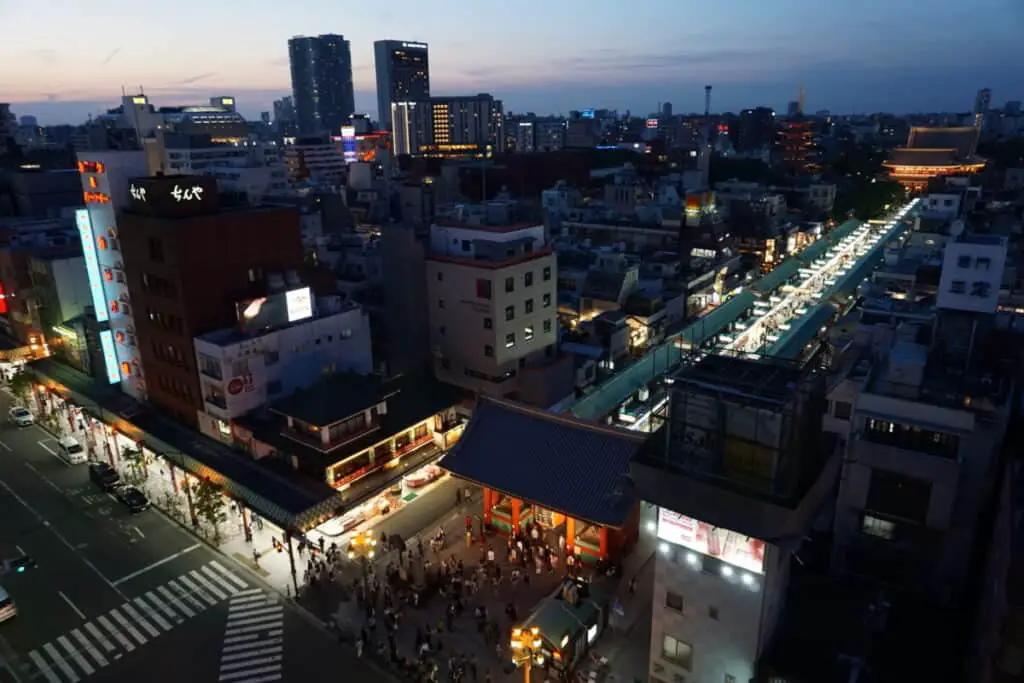
Kaminarimon
The kaminarimon is one of two entrance gates protecting the Sensoji Temple and the pagoda. This is a very impressive gate, elaborately decorated with colorful paint and symbols.
There is also a very huge lantern with a dragon design on it, protected by a statue of Fujin, the god of wind, and a statue of Raijin, the god of thunder.
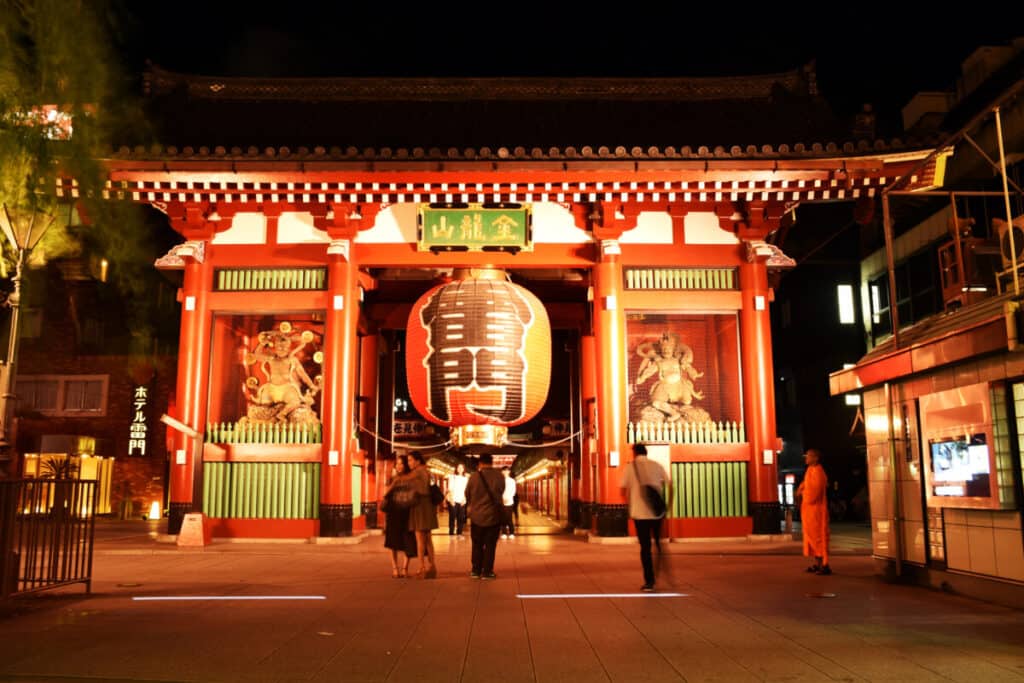
There are also a couple of statues depicting Tenryu and Kinryu, a god and goddess important to the Buddhist faith. These are fairly modern structures added to the kaminarimon gate.
This gate is often referred to as the Thunder Gate. It was also destroyed by fire throughout its history, and the current gate has been in place since 1960.
Hozomon
Once you make your way through kaminarimon, you’ll come upon the second gate, known as hozomon. When you make your way through this gate, you’ll be able to see some of the most important artifacts housed by the Sensoji Temple.
The gate consists of a structure that is two stories high. Some of the artifacts that you can see include a pair of large sandals and some important statues that depict Nio, who is the guardian deity of Buddha.
This gate, also known as the Treasure-House Gate, has also been destroyed by a fire before. The current structure has been in place since 1964.
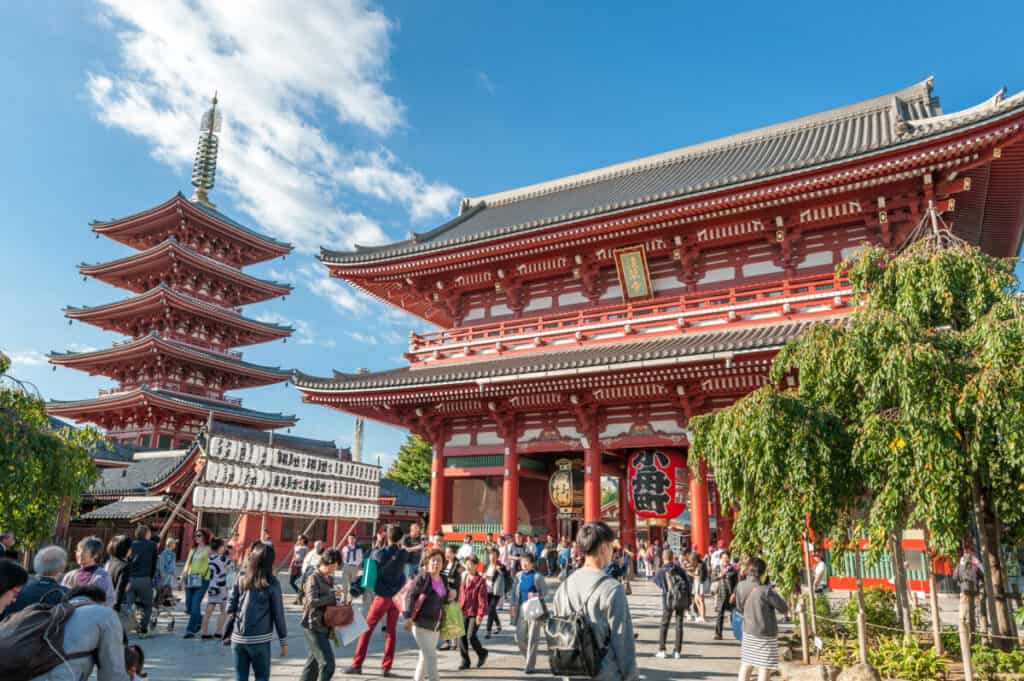
O-Mikuji Stalls
When visiting the Sensoji Temple, you’ll find some o-mijuki stalls that allow you to try and contact the divine. You are asked to donate a small amount of yen, about 100 yen, in order to participate in this practice.
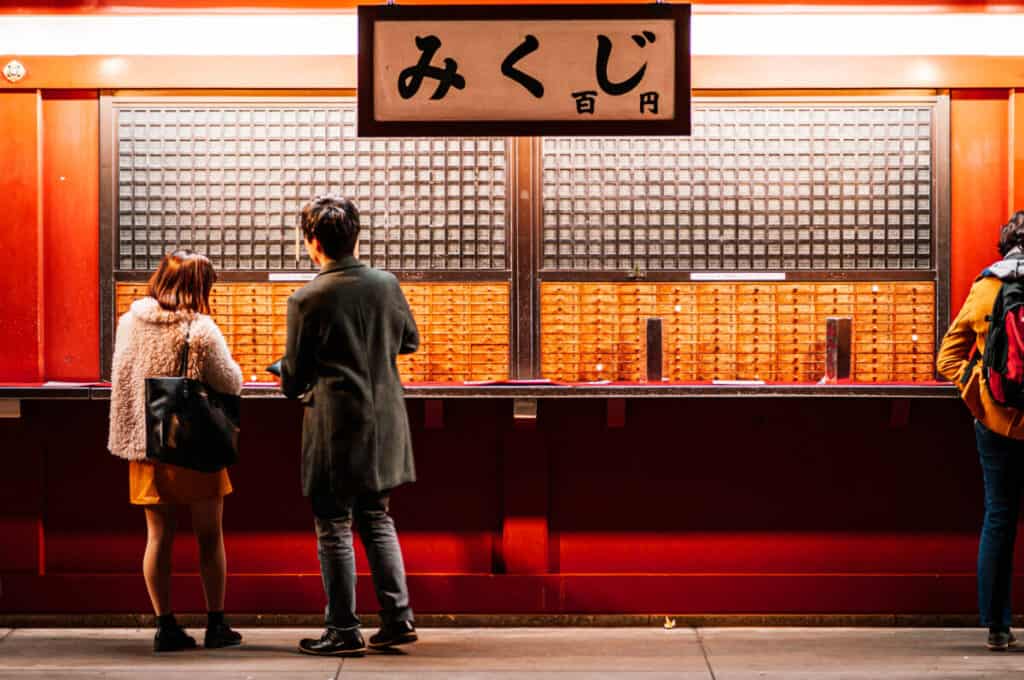
At these stalls, you’ll encounter querents, who will shake a container that has various wooden sticks. It is said that the divine will inspire the wooden stick that is selected. These sticks have various messages on them that could grant you some wisdom or even good luck.

